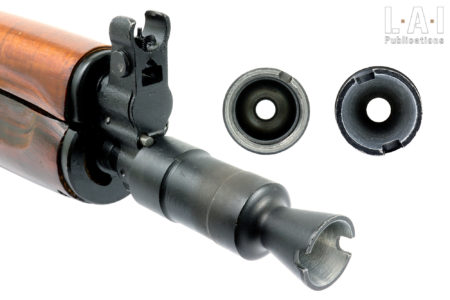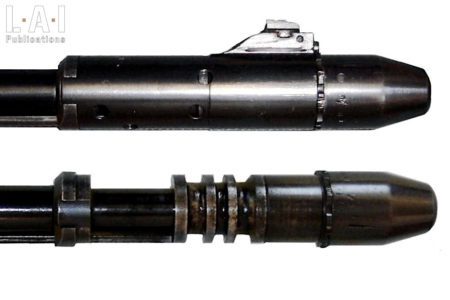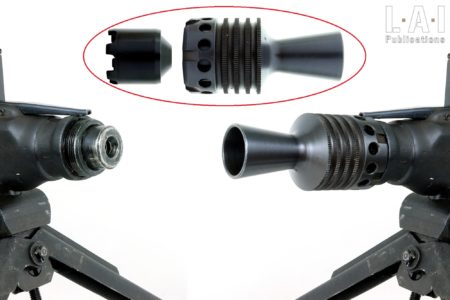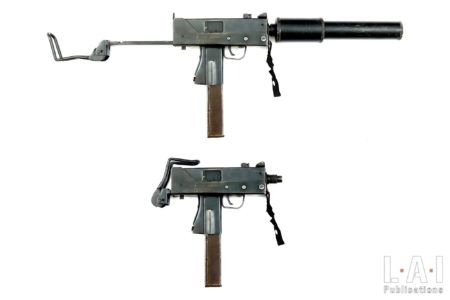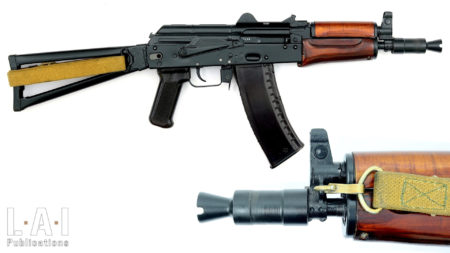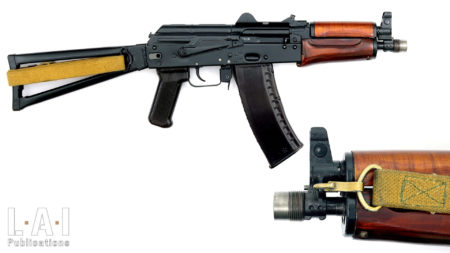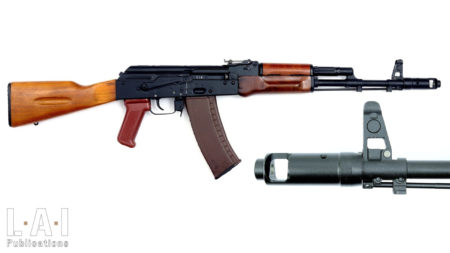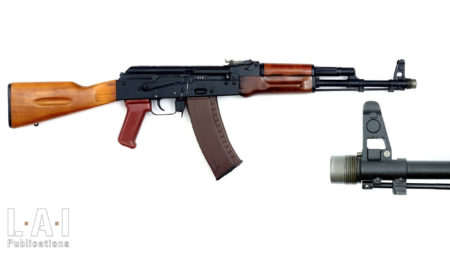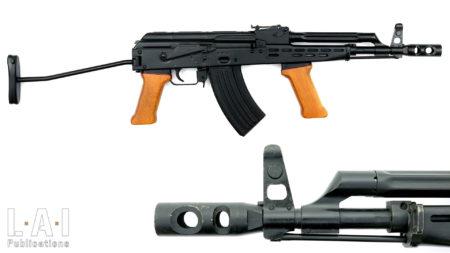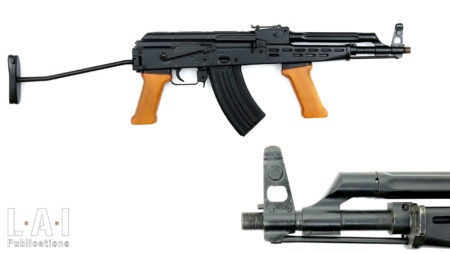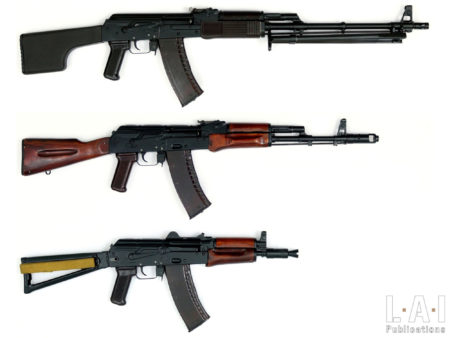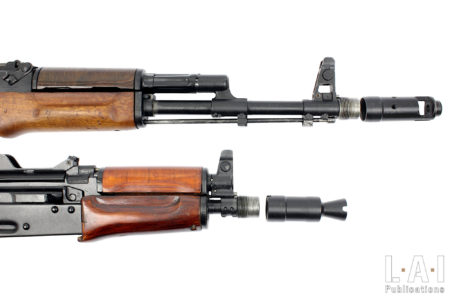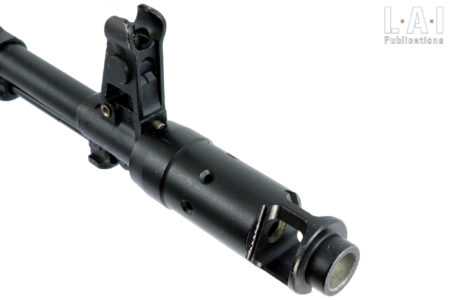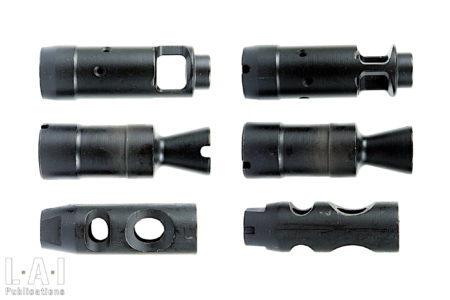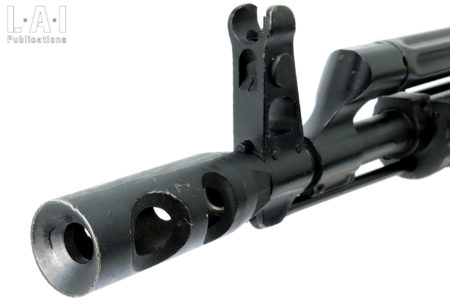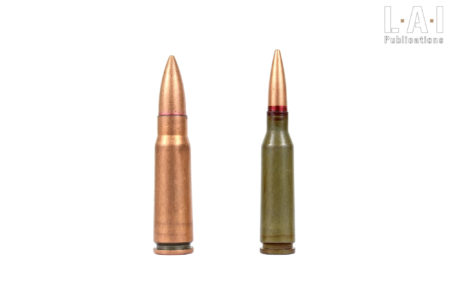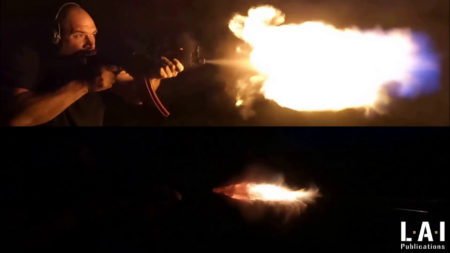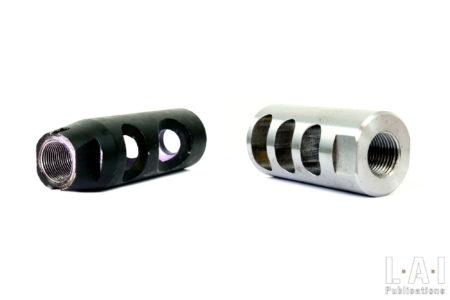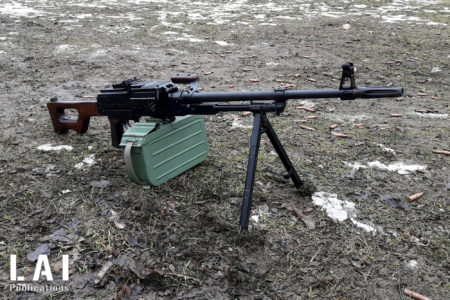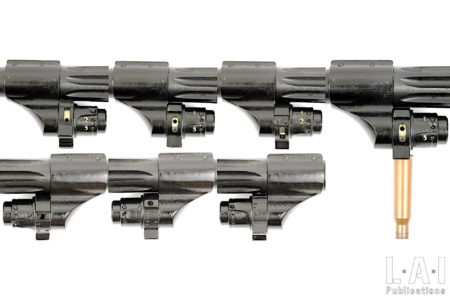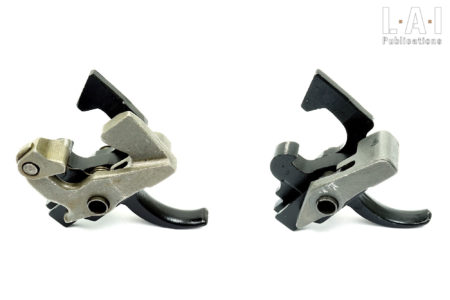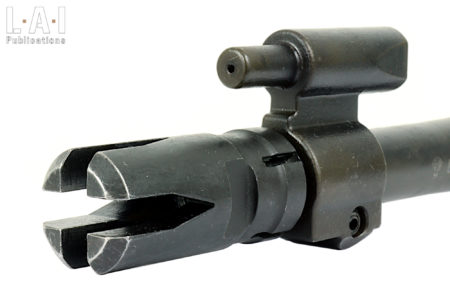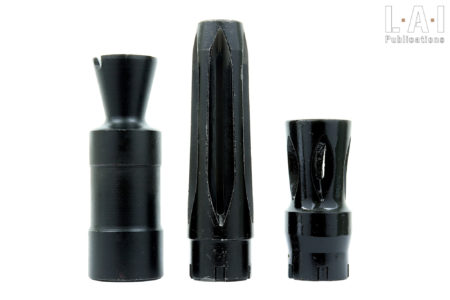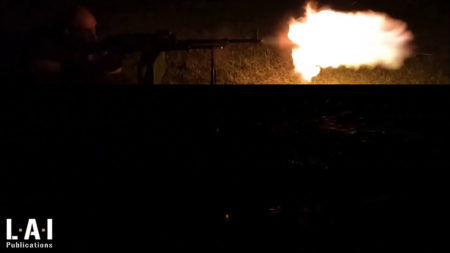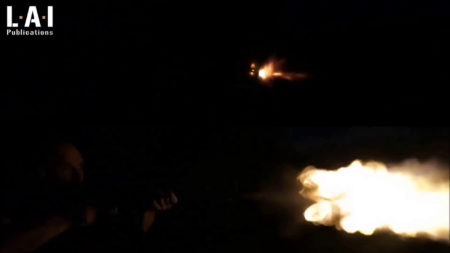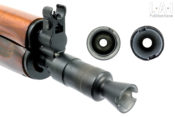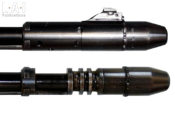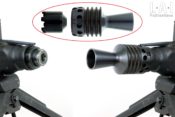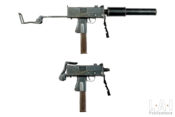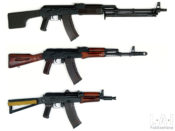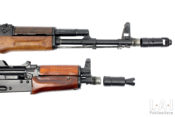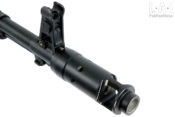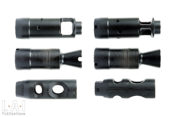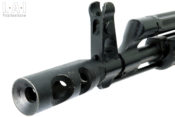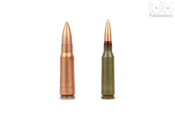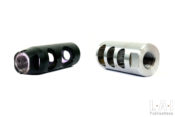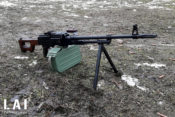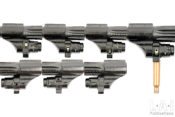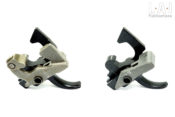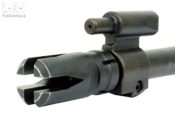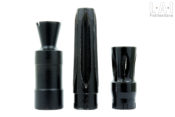Booster? What really is the purpose of the AKS-74u device?

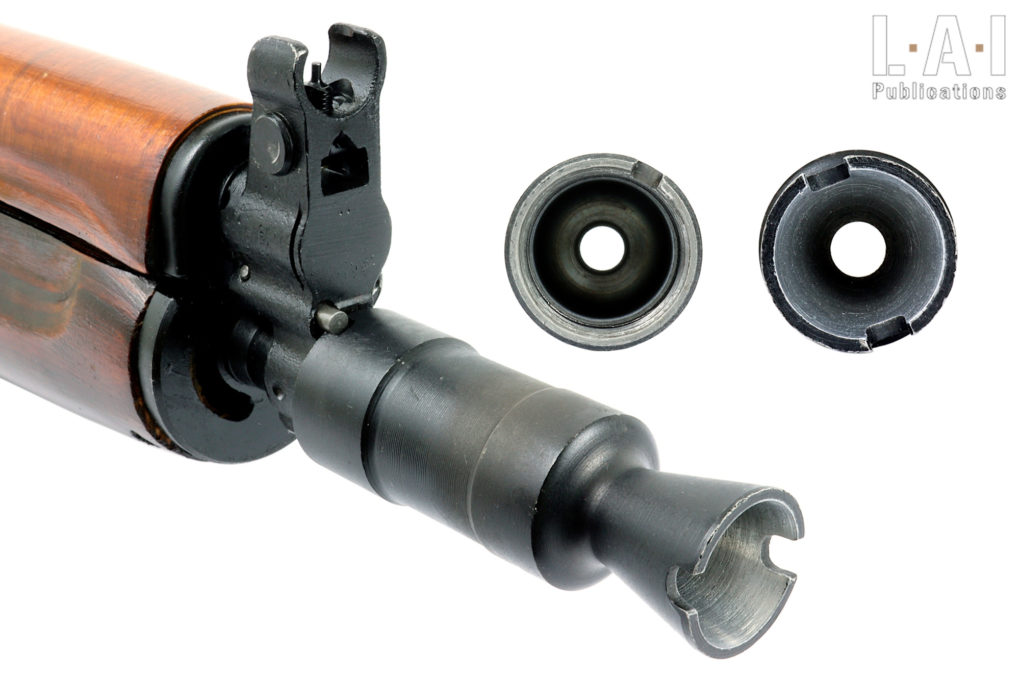
The idea for this article came from a post on InstaGram. In it, the account “thedixiemauser” questioned the veracity of something I took for granted: the muzzle device of the AKS-74u acts as a “booster” on the cyclic rate of the weapon. Questioning oneself seems to be a fundamental aspect of the work we do here. After a few exchanges with the InstaGram comrade, I decided to do the comparative test with and without muzzle device, but also to extend the experiment to two other weapons: the AK-74 and the AMD-65. The purpose being to document and discuss the results in this article.
Doubt and Prejudice
Prejudice is stated in the introduction: we are initially convinced that the muzzle device of the AKS-74u amplifies – voluntarily – the cyclic rate of the weapon (a “booster” as it is often called), in addition to constituting a flash hider. Why do we think so? The muzzle device of the AKS-74u consists of a first chamber pierced by a passage for the bullet and which is extended by a cone favoring the dispersion of unburned powder at the exit of the barrel (Pic.01). Therefore, this chamber allows additional work of the gases at the exit of the barrel. This principle of chamber generating a work of gases at the muzzle is encountered in different cases:
- On the “gas-trap” of a G41 (W or M, your choice…) or an early Garand, it allows the gases to actuate a piston (Pic.02).
- On the recoil reinforcers of the Maxim, MG-34 and MG-42 machine guns (to name a few, other weapons use it too), it accelerates the recoil of the barrel by action on its front edge to amplify the reloading impulse (Pic.03).
- On a “conventional” silencer (we are not talking about flow-through type, we have not yet experienced the thing), it increases the cyclic rate of gas-operated mechanisms and blowback mechanisms (with or without artifice – Pic.04). For weapons operating by recoil of the barrel, it depends on how the device is fixed on the weapon (on the barrel or on the frame), but that’s another story… And that’s not really the point of the article.
We deliberately mix a little of everything here, because what interests us is what the addition of a chamber at the exit of a barrel induces: an extension of the duration of the action of the gases at the muzzle of the barrel.
Without repeating in detail the remarks made in Chapter 6 of our book “Small Guide for Firearms” (available on this same site and in link here!), on gas-operated, locked breech weapons (case of the AKS-74u), we can break down the gas pulse according to the following three factors:
- The gas port pressure, linked to the positioning of the gas port on the barrel: the closer the gas port is to the chamber, the higher the pressure, and therefore the energy action.
- The quantity of gas taken from the gas port, related to the diameter (or even the number of ports): the higher the diameter, the greater the quantity of gas, therefore the energy action.
- The duration of action, related to the barrel length after the gas port: the longer this length, the longer the action on the piston.
This established, on this type of weapon the addition of a chamber to the muzzle can produce its effects in two ways:
- Either by strengthening the impulse on the piston by increasing the duration of action. However, considerable pressure is required so that this action is not at the margin of the impulse already received, because the pressure drops sharply when the bullet leaves the grooves. In addition, most gas systems have one or more exhausting vents on the piston stroke: any additional gas action after this exhausting device is therefore greatly reduced or even canceled. But if the muzzle device is very close to the gas intake device, then the effect on the piston can be significative.
- Or if the mechanism has already unlocked the breech (because we are in a locked weapon), by acting on the spent case itself and therefore on the bolt-carrier group (BCG) directly. And there, the amplification is accompanied by a gaseous return to the chamber more important than usual. This gaseous return to the chamber has been noticed by most assault rifleAn assault rifle is a weapon defined by the use of an "inter... More shooters (without adequate regulator) using a conventional silencer: the weapon quickly clogs around the breech mechanisms, blows a little on the shooter’s face and smells stronger.
Doubt, well it is the questioning of “thedixiemauser”: if we have technical reasons to believe that the AKS-74u muzzle device increases its cyclic rate, we have never tried to verify and quantify the thing! If our assertion is therefore not totally peremptory (because there is a valid technical path), it is not proven by tests. Well, not really totally unproven: we had already experienced the effects of adding a chamber several times by the use of silencers on various weapons. From .22 LR pistols to assault rifles, the mechanical effects of adding the silencer are usually very palpable:
- On semi-automatic straight blowback pistols, the addition of the silencer makes the use of certain low-power ammunition more reliable. With other more “vitaminized” ammunition, returns of gas and unburned powders were felt on the shooter’s face. Personally, and like many shooters, we have a lot of “tinkering” on .22 LR pistols.
- On different blowback submachine guns, during burst fire, the increase of the cycle rate is simply … noticeable! From STENs to “home made” Ingram MAC 10s or through MAT-49s, we have also participated in several tests during our career that have allowed us to make this observation.
- On some assault rifles, the addition of the silencer generates jams due to the over-cycle, which explains the regulator specific to the use of silencers on weapons such as the HK 416 / 417 and the FN SCAR L / H. Details in Chapter 6… Personally, we have been confronted (professionally) with reliability problems with off-the-shelf purchases of conventional silencers for G36C assault rifles… with, depending on the ammunition used, jamming rates slightly over 30% of the shots. Yes, nearly 1 jam per 30-round magazine!
But these findings remain “empirical” overall: we have not looked for the proportion of amplification provided. Effects are noted but not quantified.
Regarding the effects of the muzzle device of the AKS-74u, we had a prejudice about its increase, and by intellectual honesty, we will deliver it here: we thought the gain at about 10% in the case of the AKS-74u on the 650-735 rpm generally announced, and which is rather consistent with what we had already measured (702 rpm). So, something around an increase of 65-73 rpm. The thing was done out of plain and simple “feeling”, but also because we knew that a “classic” silencer can bring an increase of about 20% on the cyclic rate. Yes, it’s huge, but the chamber consisting of a silencer at the muzzle is considerable and makes the gases work a lot (this is the principle of the device to reduce the sound volume!). If “feeling” estimates should never be taken into consideration to draw conclusions, we must not lie: the human brain works like so, it likes to fill the void of a questioning. So, it creates, with the information it has at its disposal, and we have to deal with it… for better or for worse! From there, you have to be aware of it…and be wary of yourself.
So, we still had to experiment on the AKS-74u itself!
What to experiment?
The thing is simple: measure the AKS-74u’s cyclic rate, with and without the muzzle device (Pics.05 and 06). But while we are at it, why not add two other weapons to compare the effects with and without muzzle device? A control group, in short. Our choice fell on two weapons of the Kalashnikov family, to focus on the same mechanics:
- The AK-74, caliber 5.45×39 mm, here Bulgarian-made (Pics.07 and 08).
- The AMD-65, caliber 7.62×39 mm, Hungarian variant of the AKM, with 317 mm barrel (Pics.09 and 10).
Why the AK-74? A relative of the AKS-74u, it differs mainly (but not only) from the subcompact model by the length of its barrel: 415 mm against 206.5 mm (Pic.11). The excessively short barrel length of the AKS-74u has among other things, an extremely short distance between the gas port and the muzzle of the barrel: about 30 mm for the AKS-74u against about 135 mm for the AK-74 (Pic.12). In addition, both weapons have a muzzle device with a chamber, but with a noticeable difference: the AK-74 is pierced with three vents to direct a gas thrust up and right (Pics.13 and 14). It is the climbing / offsetting compensator of the weapon for a right-handed shooter. Anyway, the gases “work” in this chamber, but the presence of these vents necessarily drops the pressure in it. The primary vocation of this chamber remains, in our opinion, the combustion of unburned powder in a confined space, in order to “break” the muzzle flash. This is also the case in the AKS-74u, but as mentioned, we think that there is a double effect: consume the unburned powder in a confined space and exploit the pressure thus obtained to amplify the cyclic rate.
Why the AMD-65? If the weapon does not share the caliber of the AKS-74u (it is 7.62×39 mm and not 5.45×39 mm), it shares two common points:
- A barrel shorter than the weapon from which it is derived, the AKM: 317 mm for the AMD-65 against 415 mm for the AKM.
- A rather small distance between the gas port and the muzzle of the barrel: about 47 mm. It is about 115 mm on the AKM.
Moreover, having already experimented with this weapon on several occasions, we knew – again empirically – that the cyclic rate is “significantly” lower than an AK-47’s or an AKM’s… To paraphrase “Heartbreak Ridge“, it does not make the “Distinct sound of the AK-47“, but something a little slower and louder! Yes, I’m trolling a little… But we hear and feel the difference when shooting. In addition, the weapon also has an impressive muzzle device, but here no chamber, simply a big “muzzle brake”… which also officiates as a flash hider (Pic.15). Ah, yes, always in honesty, for a reason that is beyond us (because devoid of any form of reason…), it is one of my favorite AK … The stock is uncomfortable, the front grip annoys more than anything else… but I like it! It is not written anywhere that it is necessary to like only perfect and useful things (otherwise, first, I would still be single…) and then I like the Desert Eagle too… Damn, anyway! Maybe it’s the Rambo III effect for one and Last Action Hero for the other… There are no bad weapons, but bad uses… but enough small talk.
Our “protocol”
For each weapon, we fired a burst of 20 rounds with and without muzzle device. Why 20 rounds? First of all because the AMD-65 is mainly used with a magazine of this capacity (the use of 30-round magazine is possible, but impractical because of the front grip). In addition, we feel the length of the burst is enough to make accurate measurements. Finally, we will limit by this choice the consumption of ammunition … but especially the heating of the weapon, which has consequences on the cyclic rate. It is for this last reason that we waited between each sequence for the barrel of the weapon to go totally cold to the touch.
The tests took place at the end of March 2023, in the early evening: the sun is in the right place to film. It was rather cool, and it was windy (my beard indicating the direction of the wind… from the front!). Each sequence was filmed (using a GO PRO 10 for those interested, for the Phantom, we need more subscribers…) at 240 frames per second, which allows us to slow down the sequence 8 times. We calculated the cyclic rate as usual: on the sequence at 240 frames per second, from the first frame where we see the beginning of a muzzle wave to the last frame where we see the beginning of the muzzle wave of the last shot. Mathematics (in fact, an Excel file…) did the rest. Of course, we will not limit our observations to the cyclic rate! We will present and debrief each sequence individually, and then we will do an overall analysis.
We agreed to make two series for each weapon… but we had problems with the second series of the AK-74: only the shot without muzzle device was filmed. So, there are two series for the AKS-74u and AMD-65, but only one for the AK-74. Only those who do nothing do not make mistakes… However, we will conduct a new series of two trials and update the work as soon as possible…
So, yes, to refine the results, we could have repeated the experiment over 10 series… But to be up to a “lab” test, it would take 10 weapons, tempered at the desired temperature before each shot, with ammunition tempered as well… etc. Let’s not forget where we are talking from: our test is indicative, but it is not a laboratory work. As for temperature, we will return to this topic later, because it deserves special attention.
We conducted the test as follows:
- First series, firing first without the muzzle device, then after cooling of the barrel, with the muzzle device.
- Second series, firing first with the muzzle device, then after cooling of the barrel, without the muzzle device.
Note here that the fact of having to wait for the total cooling of the barrel, even at the end of March in metropolitan France, is finally quite long…
The ammunition used for the test is military surplus in homogeneous batches (Pic.16):
- Of Soviet origin for the 5.45×39 mm.
- Of Chinese origin for the 7.62×39 mm.
1. AKS-74u
Annual subscription.
€45.00 per Year.
45 € (37.5 € excluding tax) Or 3,75€ per month tax included
- Access to all our publications
- Access to all our books
- Support us!
Monthly subscription
€4.50 per Month.
4.50 € (3.75 € excluding tax)
- Access to all our publications
- Access to all our books
- Support us!


